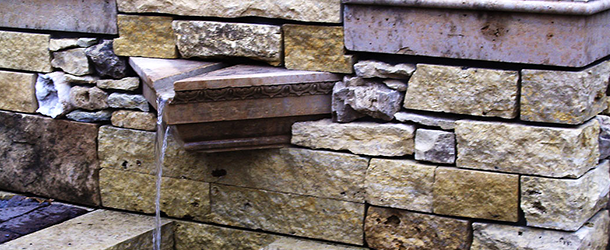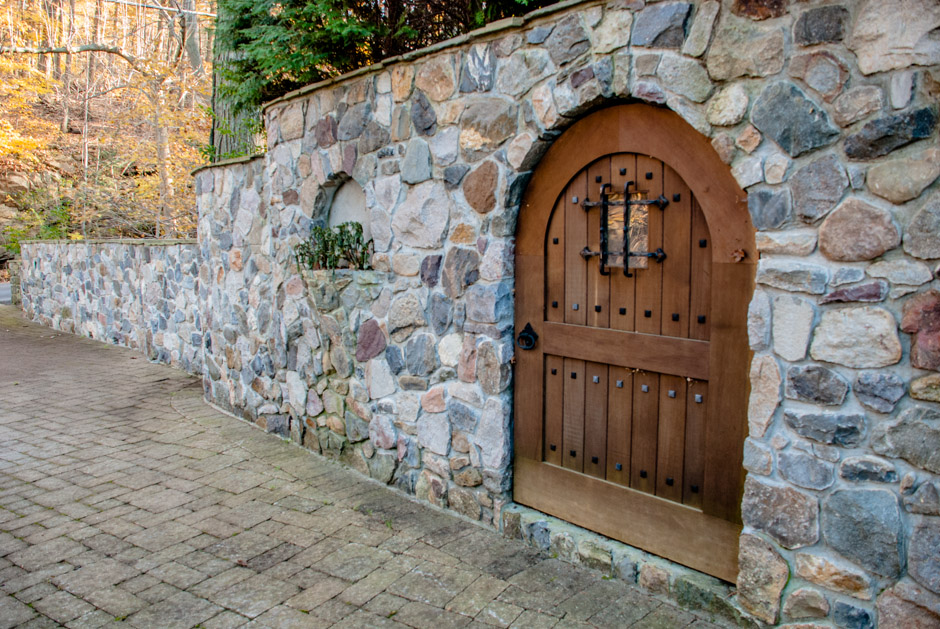Stone Masonry is one of the oldest types of construction and has been around for a couple of thousand years. It is made by bonding stone with cement or mortar to form structures or walls. There are only two main types of Stone Masonry construction. One is Rubble, the other is Ashlar. Of these two there are several forms of masonry under each classification. These are listed under the separate types as follows:

1. Ashlar
Rough Tooled:
The face of this wall is made rough by the use of tools while the bed and sides are finely chiseled and smooth. The 25 mm wide perimeter around the face’s rough dressing is formed with a chisel.
Fine Masonry:
Uniform rectangle stones are laid to form perfect horizontal and vertical joints with each of the exact same size stones. The stones are tooled to a fine finish on all sides.
Rock or Quarry Faced:
The face of this masonry has stones with edges like they were received from the quarry, but the perimeter of each stone has a 25mm strip of mortar holding it.
Chamfered Masonry:
The masonry mortar strip is beveled at a 45 degree angle with the chisel for a 25mm depth. Chamfered is another word for beveled.
Ashlar back course masonry:
A combination of ashlar and rubble masonry this uses a hammer to dress stone for the face while the backing has rubble masonry.
2. Rubble:
Random Rubble Coursed :
The stones used in random rubble masonry are mixed randomly with differing faces and sizes. In each particular course or line of stone, the stones of a similar height are used.
Random Rubble Uncoursed:
The stones in random rubble uncoursed are all different, but in uncoursed masonry the courses or lines are not maintained uniformly. The larger stones are added first and then the spaces are filled between them.
Square Rubble Coursed:
Using stones that have straight beds and sides these stones are laid square and brought to a straight finish. Each line of stones will have a different depth.
Square Rubble Uncoursed:
Stones of straight sides and beds are used but differing sizes of stone are used in randomized patterns. Everything is laid in square straight finish.
Polygonal Rubble:
The face joints in polygonal rubble run in all directions. The stones are formed by a hammer to make a polygonal shape.
Flint Rubble:
Irregular shaped cobbles or flints are used and bonded together by mortar.
Dry Rubble:
In dry rubble masonry mortar isn’t used. These walls may be used to drain water for landscaping.
Uses:
Each of these types of Stone Masonry have there own uses and reasons.
A dry rubble wall can be used in landscaping situations to hold dirt for lawns but allow water to seep out without destroying the landscape. It is the cheapest construction and can only be used in non load bearing situations. It might need some other structure behind it for retaining strength.
The most expensive type of masonry construction is Ashlar Fine Masonry. The uniform stones laid in uniform construction with perfect horizontal and vertical joints costs a lot in material and in labor for masons. There is also a lot of waste in material.

